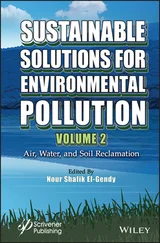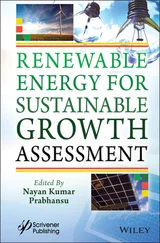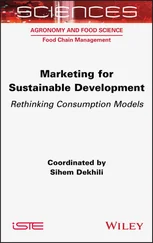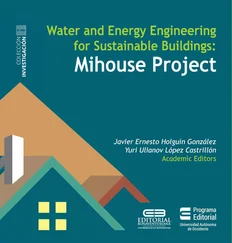50 50 Zhou, J., Bruns, M., and Tiedje, J.M. (1996). DNA recovery from soils of diverse composition. Appl. Environ. Microbiol. 62: 316–322.
51 51 Walter, V., Syldatk, C., and Hausmann, R. (2010). Screening concepts for the isolation of biosurfactant producing microorganisms. In: Biosurfactants (ed. R. Sen), 1–13. New York: Landes Bioscience and Springer Science.
52 52 Weber, T., Blin, K., Duddela, S. et al. (2015). AntiSMASH 3.0 – a comprehensive resource for the genome mining of biosynthetic gene clusters. Nucleic Acids Res. 43: 1–7.
53 53 Altschul, S.F., Gish, W., Miller, W. et al. (1990). Basic local alignment search tool. J. Mol. Biol. 215: 403–410.
54 54 Suenaga, H. (2012). Targeted metagenomics: A high‐resolution metagenomics approach for specific gene clusters in complex microbial communities. Environ. Microbiol. 14: 13–22. https://doi.org/10.1111/j.1462‐2920.2011.02438.x.
55 55 Tuffin, M., Anderson, D., Heath, C., and Cowan, D. (2009). Metagenomic gene discovery: How far have we moved into novel sequence space? Biotechnol. J. 4: 1671–1683.
56 56 Ekkers, D.M., Cretoiu, M.S., Kielak, A.M., and Elsas, J.D. (2012). The great screen anomaly — a new frontier in product discovery through functional metagenomics. Appl. Microbiol. Biotechnol. 93: 1005–1020.
57 57 Montiel, D., Kang, H.‐S., Chang, F.‐Y. et al. (2015). Yeast homologous recombination‐based promoterengineering for the activation of silent natural product biosynthetic gene clusters. Proc. Natl. Acad. Sci. USA. 112 (29): 8953–8958. https://doi.org/10.1073/pnas.1507606112.
58 58 Chen, Y. and Murrell, J.C. (2010). When metagenomics meets stable‐isotopes probing: Progress and perspectives. Trends Microbiol. 18: 4.
59 59 Dumont, M.G. and Murrell, J.C. (2005). Stable isotope probing – Linking microbial identity to function. Nat. Rev. Microbiol. 3: 499–504.
60 60 Binga, E.K., Lasken, R.S., and Neufeld, J.D. (2008). Something from (almost) nothing: The impact of multiple displacement amplification on microbial ecology. ISME J. 2: 233–241.
61 61 Burch, A.Y., Browne, P.J., Dunlap, C.A. et al. (2011). Comparison of biosurfactant detection methods reveals hydrophobic surfactants and contact‐regulated production. Environ. Microbiol. 13: 2681–2691.
62 62 He, S., Ni, Y., Lu, L. et al. (2020). Simultaneous degradation of n‐hexane and production of biosurfactants by Pseudomonas sp. strain NEE2 isolated from oil‐contaminated soils. Chemosphere 242: 125237.
63 63 Lenchi, N., Kebbouche‐Gana, S., Servais, P. et al. (2020). Disel biodegradation capacities and biosurfactants production in saline‐alkaline conditions by Delftia sp. NL1, isolated from an Algerian oilfield. Geomicrobiol. J. https://doi.org/10.1080/01490451.2020.1722769.
64 64 Siegmund, I. and Wagner, F. (1991). New method for detecting rhamnolipids excreted by Pseudomonas species during growth on mineral agar. Biotechnol. Tech. 5: 265–268.
65 65 Bodour, A.A. and Maier, R.M. (1998). Application of a modified drop collapse technique for surfactant quantification and screening of biosurfactant‐producing microorganisms. J. Microbiol. Methods 32: 273–280.
66 66 Burch, A.Y., Shimada, B.K., Browne, P.J., and Lindow, S.E. (2010). Novel high‐throughput detection method to assess bacterial surfactant production. Appl. Environ. Microbiol. 76: 5363–5372.
67 67 Thavasi, R., Sharma, S., and Jayalakshmi, S. (2011). Evaluation of screening methods for the isolation of biosurfactant producing marine bacteria. J. Pet. Environ. Biotechnol. S1: 001.
68 68 Batista, S.B., Mounteer, A.H., Amorim, F.R., and Totola, M.R. (2006). Isolation and characterization of biosurfactant/bioemulsifier‐producing bacteria from petroleum contaminated sites. Bioresour. Technol. 97: 868–875.
69 69 Rosenberg, M., Gutnick, D., and Rosenberg, E. (1980). Adherence to bacteria to hydrocarbons: A simple method for measuring cell‐surface hydrophobicity. FEMS Microbiol. Lett. 9: 29–33.
70 70 Gidudu, B., Mudenda, E., and Chirwa, E.M.N. (2020). Biosurfactant produced by Serrati sp. and its application in bioremediation enhancement of oil sludge. Chem. Eng. Trans. 79: 433–438.
71 71 Ashitha, A., Radhakrishnan, E.K., and Jyothis, M. (2020). Characterization of biosurfactant produced by the endophyte Burkholderia sp. WYAT7 and evaluation of its antibacterial and antibiofilm potentials. J. Biotechnol. https://doi.org/10.1016/j.jbiotec.2020.03.005.
72 72 Charlop‐Powers, Z., Milshteyn, A., and Brady, S.F. (2014). Metagenomic small molecule discovery methods. Curr. Opin. Microbiol. 19C: 70–75.
73 73 Kim, J.H., Feng, Z., Bauer, J.D. et al. (2010). Cloning large natural product gene clusters from the environment: Piecing environmental DNA gene clusters back together with TAR. Biopolymers 93: 833–844.
74 74 Owen, J.G., Reddy, B.V.B., Ternei, M.A. et al. (2013). Mapping gene clusters within arrayed metagenomic libraries to expand the structural diversity of biomedically relevant natural products. Proc. Natl. Acad. Sci. USA. 110: 11797–11802.
75 75 Loeschcke, A., Markert, A., Wilhelm, S. et al. (2013). TREX: a universal tool for the transfer and expression of biosynthetic pathways in bacteria. ACS Synth. Biol. 2: 22–33.
76 76 Ferrer, M., Chernikova, T.N., Yakimov, M.M. et al. (2003). Chaperonins govern growth of Escherichia coli at low temperatures. Nat. Biotechnol. 21: 1266–1267.
77 77 Makrides, S.C. (1996). Strategies for achieving high‐level expression of genes in Escherichia coli. Microbiol. Rev. 60: 512–538.
78 78 Van Elsas, J.D., Speksnijder, A.J., and van Overbeek, L.S. (2008). A procedure for the metagenomics exploration of disease‐suppressive soils. J. Microbiol. Methods 75: 515–522.
79 79 Kakirde, K.S., Parsley, L.C., and Liles, M.R. (2010). Size does matter: Application‐driven approaches for soil metagenomics. Soil Biol. Biochem. 42: 1911–1923.
3 Biosurfactant Production Using Bioreactors from Industrial Byproducts
Arun Karnwal
Department of Microbiology, School of Bioengineering and Biosciences, Lovely Professional University, Phagwara, Punjab, India
1 3.1 Introduction
2 3.2 Significance of the Production of Biosurfactants from Industrial Products
3 3.3 Factors Affect Biosurfactant Production in Bioreactor
4 3.4 Microorganisms 3.4.1 Bacteria 3.4.2 Fungi and Yeast
5 3.5 Bacterial Growth Conditions 3.5.1 Continuous Cultures 3.5.2 Batch Processes 3.5.3 Fed-Batch Process
6 3.6 Substrate for Biosurfactant Production 3.6.1 Production of Biosurfactant with Food and Vegetable Oil Waste 3.6.2 Development of Biosurfactants Using Waste Frying Oil 3.6.3 Fruit and Vegetable Industry Byproducts for Biosurfactant Processing 3.6.4 Starch-Rich Byproduct from the Industry for Biosurfactant Production 3.6.5 Biosurfactant Synthesis from Lignocellulosic Industrial Byproducts
7 3.7 Conclusions
8 Acknowledgement
9 References
Surfactants are amphiphilic molecules with two contrary components, one component being hydrophobic and other hydrophilic in nature [1, 2]. Hydrophobic and hydrophilic components depend on the polar charge, which may be anionic, cationic, neutral, or amphoteric. Biosurfactants are emerging as a promising alternative for synthetic surfactants in the industrial sector, as companies develop environmentally safe biosurfactants using various renewable and organic materials. Usually, the surfactants derived from organic substances comprise both hydrophilic and hydrophobic components. Natural surfactants are a group of secondary metabolites that are widely present in many plants, microorganisms and several sea animals [3]. Surfactants are surface‐active chemicals used in detergents and soaps for reducing surface tension. Biosurfactants can be produced from various low‐cost industrial waste materials ( Figure 3.1).
Читать дальше












